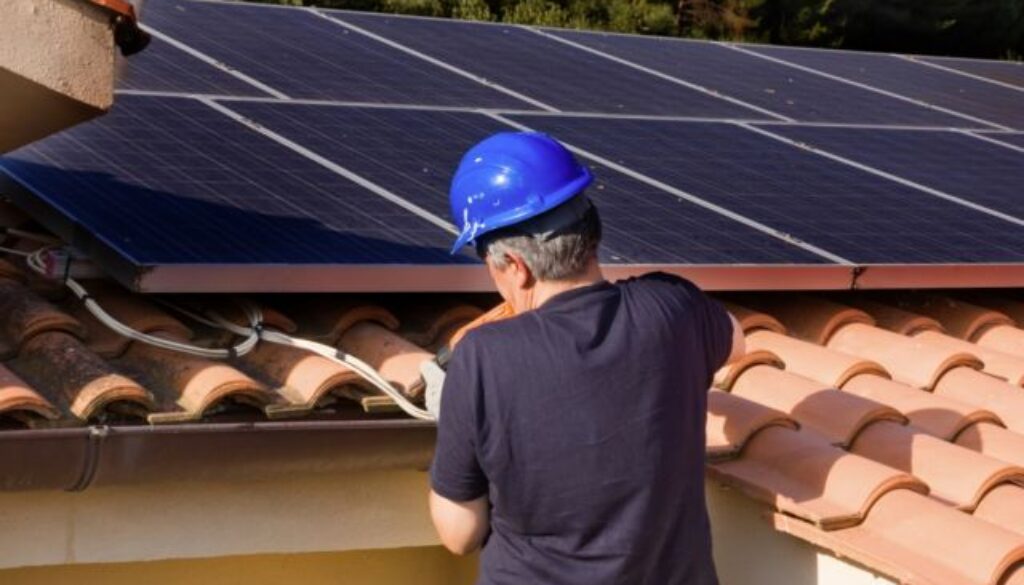Postcard from California: Regulators bowing to scheme to cripple rooftop solar

Once again, California is poised to sabotage its own climate goals.
After almost a year of heated public debate, the California Public Utilities Commission (PUC) has unveiled its latest proposal for changes to the state’s rooftop solar program. The so-called reforms could cripple what is by far the most successful solar initiative in the U.S.
More than 1.5 million California households, schools and small businesses have installed solar panels. For 2019, the latest estimate available, the state said rooftop solar kept 6 million metric tons of planet-heating carbon dioxide out of the atmosphere – equal to taking 1.3 million cars off the road. That’s a big boost to the state’s goal of 100% carbon-free electricity by 2045.
But California’s “Big Three” utilities – Pacific Gas and Electric Co. (PG&E), Southern California Edison and San Diego Gas & Electric Co. – hate rooftop solar.
Under a program known as net metering, solar customers are freed from having to buy electricity from the utilities, whose rates are some of the highest in the country. Instead, solar panel owners generate much of their own power. If they generate more than they draw from the utility-owned grid, the excess flows back into the system, and the utilities must pay them for it.
“A tax on the sun”
Last year the Big Three pushed the PUC to deeply slash the rebates to solar customers and tack on a steep monthly surcharge just for connecting to the grid. In February, the PUC bowed to the lobbying and issued a proposal that could have slowed rooftop solar growth by half or more.
Public outcry forced the PUC to pull the first proposal back for revision. A new proposal in May still amounted to what outraged consumers, solar companies and environmental advocates called “a tax on the sun,” so the commission pulled it back again.
But round three, released Nov. 10, remains a severe blow to the future of rooftop solar. It scraps the connection surcharge, but still cuts the rebate for energy returned to the grid by about 75%, decimating one of the strongest incentives for consumers to go solar.
Nationwide, other big utilities have persuaded state regulators to shrink solar rebates, but the Environmental Working Group says the proposed reduction in California would be “the most severe of any residential solar program in the country.” The PUC will vote on the proposal in December, and hasn’t ruled out revisiting the connection surcharge as soon as next year.
Freeloaders?
Why did the PUC put the utilities’ insatiable appetite for profit above the economic interests of Californians and the urgent imperative to transition to clean energy as soon as possible?
The utilities argued that rooftop solar customers are freeloaders, saving so much on their monthly bills that they aren’t paying their fair share of running and maintaining the grid. They say solar customers are rich elites who can afford solar panels – an average of about $14,000 for a typical California home, before a 30% federal tax credit – but leave less affluent customers with the full costs of operating the grid.
The class-warfare canard doesn’t hold up.
A new study from Lawrence Berkeley National Laboratory found that almost 40% of California households that installed solar in 2021 were middle class or lower-income. Nationally, the income of new solar adopters shows a steady downward trend. By gutting the incentives to go solar, the PUC ‘s proposal could reverse that trend.
Studies from state regulators across the US, federal energy laboratories and academic researchers show that rooftop solar benefits all customers. By reducing the need for new power plants and transmission lines, rooftop solar saves utilities billions of dollars that would otherwise be passed on to customers. (Rooftop solar is also safer: California’s 26,000 miles of electricity transmission lines have sparked many of the state’s deadly wildfires.)
But utilities want to spend those billions. That’s because state law lets them not only pass the base costs of new infrastructure on to customers, but tack on a healthy surcharge – a guaranteed profit, currently around 10% for each of the Big Three. That’s actually how utilities make money, not from customers’ monthly use of electricity.
Guaranteed profit is a relic of the early days of electricity, when regulators wanted to give utilities an incentive to extend power to everyone in California. The state also carved out exclusive territories, so that anyone living in most of Northern California must buy electricity from PG&E, and everyone in most of Southern California must buy from Edison. PG&E has 16 million “captive customers,” Edison has 15 million and San Diego Gas & Electric has 3.7 million.
A threat to utilities’ monopoly
The regional monopoly model is threatened by rooftop solar, which lets homeowners generate their own power and get paid for energy put back into the grid. The PUC has long been a “captured” agency, and with its proposal to cripple rooftop solar, it’s again kowtowing to the utilities’ interests – another example of California undercutting its own ambitious climate goals.
Utilities know the transition to clean, renewable energy is inevitable, but California’s Big Three want to slow the pace and control the supply. They may build or buy from huge utility-scale solar plants – which are threatening fragile desert ecosystems – but they don’t want to lose any of their captive customer base to rooftop solar or smaller community-scale solar systems.
It’s time to replace the outdated and broken monopoly model with a system that serves the needs of Californians, not utility companies’ Wall street investors. Today, and increasingly in the future, electricity customers must have freedom to choose where they get their energy.
California should be going all-out to accelerate rooftop solar adoption for all residents, and to make solar more affordable for lower-income communities and communities of color. The PUC’s proposal is a handout to greedy utilities that will set back both of those goals.
- Bill Walker has more than 40 years of experience as a journalist and environmental advocate. He lives in California’s San Joaquin Valley.
(Opinion columns published in The New Lede represent the views of the individual(s) authoring the columns and not necessarily the perspectives of TNL editors.)
 EWG
EWG


